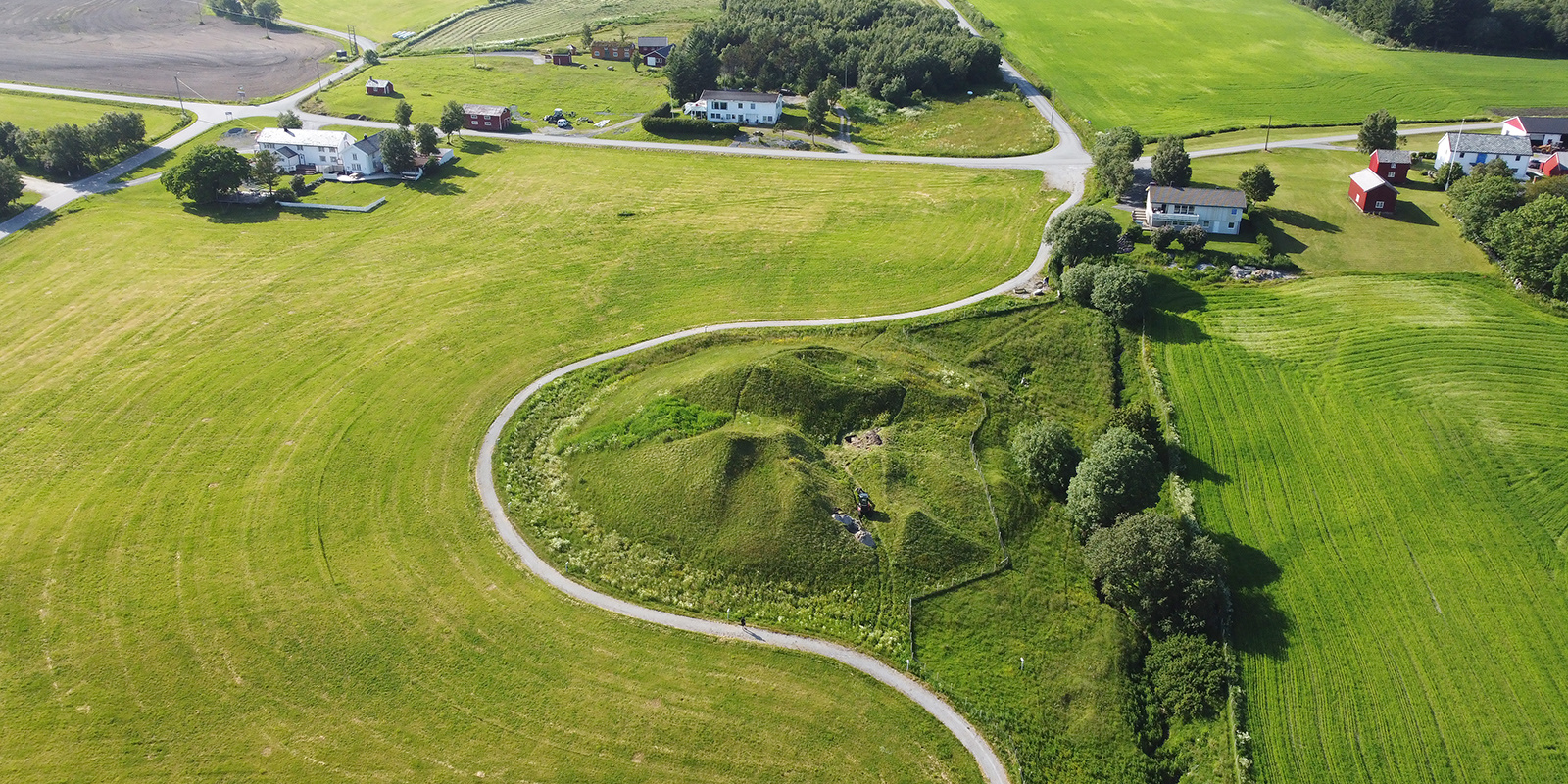
Dating efforts of a ship burial on Norway’s north-central island of Leka have revealed it is the oldest known such burial in Scandinavia. It predates the Viking Age.
Archaeologists and a metal detectorist found the ship last summer on Herlaugshaugen, a burial mound on the island, when they teamed up.
Their mission was to date a burial mound and unveil the potential presence of a ship. This investigation was conducted in partnership with the Norwegian Directorate for Cultural Heritage and Trøndelag County Authority.
The archaeologists were thrilled upon discovering substantial rivets, confirming that the site was without a doubt a ship burial, according to Norwegian SciTech News.
“The mound was constructed in approximately 700 CE,” said Geir Grønnesby, an archaeologist at the NTNU University Museum. “This is called the Merovingian period and precedes the Viking Age. [It] is really exciting because it pushes the whole tradition of ship burials quite far back in time.”
“It tells us that people from this area were skilled seafarers—they could build big ships—much earlier than we previously thought,” Grønnesby added.
Merovingian ship burial discovery changes perspective of Viking Age
The evolution of shipbuilding holds a pivotal position in the ongoing debate about the onset and motives behind the Viking Age.
While we can’t definitively claim an earlier start to the Viking Age based on this dating, Grønnesby says that building a ship of such magnitude implies a purpose.
A 1,300-year-old Vikings ship burial has been discovered in Norway. The excavation in Leka revealed nails and rivets confirming the burial mound contained a ship. This finding pushes back the tradition of ship burials and suggests earlier Scandinavian maritime expeditions. pic.twitter.com/EtgpD4WugP
— Artifact Labs (@ArtifactLabs_) December 31, 2023
Beyond the ship, the Herlaugshaugen burial mound stands as a symbol of power and prosperity. This wealth doesn’t seem to stem from farming in Ytre Namdalen. Lars Forseth, an archaeologist from Trøndelag County Authority, suggests that the local community likely participated in trade. The trade possibly spanned considerable distances.
Forseth highlights the pivotal role of the burial mound’s position along the shipping route in understanding why Herlaugshaugen is situated on Leka. Historical evidence points to the trade of whetstones from Trøndelag to the continent since the mid-700s. There was generally a significant amount of goods transportation along the route.
This trade route knowledge is crucial for unraveling a greater understanding of the Viking Age and earlier advancements in ship design, as stated by Forseth.
Unearthing of a seated skeleton and sword in Herlaugshaugen
The Herlaugshaugen burial mound has a diameter exceeding sixty meters, ranking among the largest burial mounds in Norway.
Dating back to the late 1700s, the mound underwent three excavations. Historical accounts reveal discoveries such as a wall, iron rivets, and a bronze cauldron. Other findings include animal bones and a seated skeleton with a sword, according to Norwegian SciTech News.
However, these findings vanished in the early 1920s. The skeleton once displayed as King Herlaug at Trondheim Cathedral School has since gone missing. This leaves its fate unknown, as Grønnesby noted.
See all the latest news from Greece and the world at Greekreporter.com. Contact our newsroom to report an update or send your story, photos and videos. Follow GR on Google News and subscribe here to our daily email!



